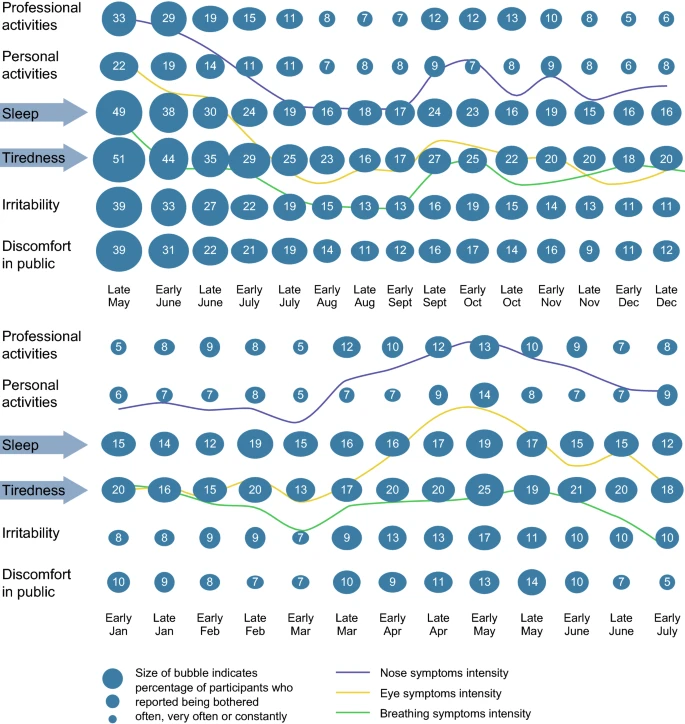Research – Open Access
Pascal Demoly, Andrea Matucci, Oliviero Rossi & Carmen Vidal
Clinical and Translational Allergy volume 10, Article number: 27 (2020)
Abstract
Background
House dust mite (HDM) allergens constitute the most frequent cause of persistent allergic rhinitis and asthma. The symptoms vary throughout the year but typically peak in spring, autumn and (to a lesser extent) mid-winter.
Methods
We performed a 13-month, observational, multicentre survey of adult patients with a self-reported history of moderate-to-severe, poorly controlled, physician-diagnosed HDM respiratory allergy in three European countries (France, Italy and Spain). After screening and inclusion, 28 detailed, fortnightly telephone interviews were used to gather extensive data on the participants’ symptom prevalence and intensity, medical consultations, disease burden and medication use from late May 2012 to early July 2013. This report focuses on the disease burden.
Results

Of the 22,995 screened participants, 313 met the inclusion criteria and completed the post-inclusion questionnaire (n = 114 in Italy, 92 in France and 107 in Spain). The median time since the first symptoms of HDM allergy was ≥ 13 years in each country. A relevant minority of the participants suffered from symptoms of HDM allergy every day or almost every day of the year (14% in Italy, 46% in France and 37% in Spain). According to the fortnightly telephone interviews, the most frequently impacted disease burden variables were sleep, daytime tiredness and irritability, with the highest values in spring 2012, autumn 2012 and spring 2013 (mirroring symptom intensities). Professional activities were more affected than social activities. The burden data were heterogeneous: around a quarter of participants were strongly or very strongly affected but most of the remaining participants were only rarely bothered or not bothered.
Conclusions
In a 13-month, fortnightly survey of patients in France, Italy and Spain with a self-reported history of moderate-to-severe, poorly controlled, HDM-induced allergic rhinitis and asthma, we found that a relevant minority of participants regularly reported a severe or very severe impact of their allergy on tiredness, sleep and professional activities (including time off work). The disease burden peaked in autumn and late spring.
